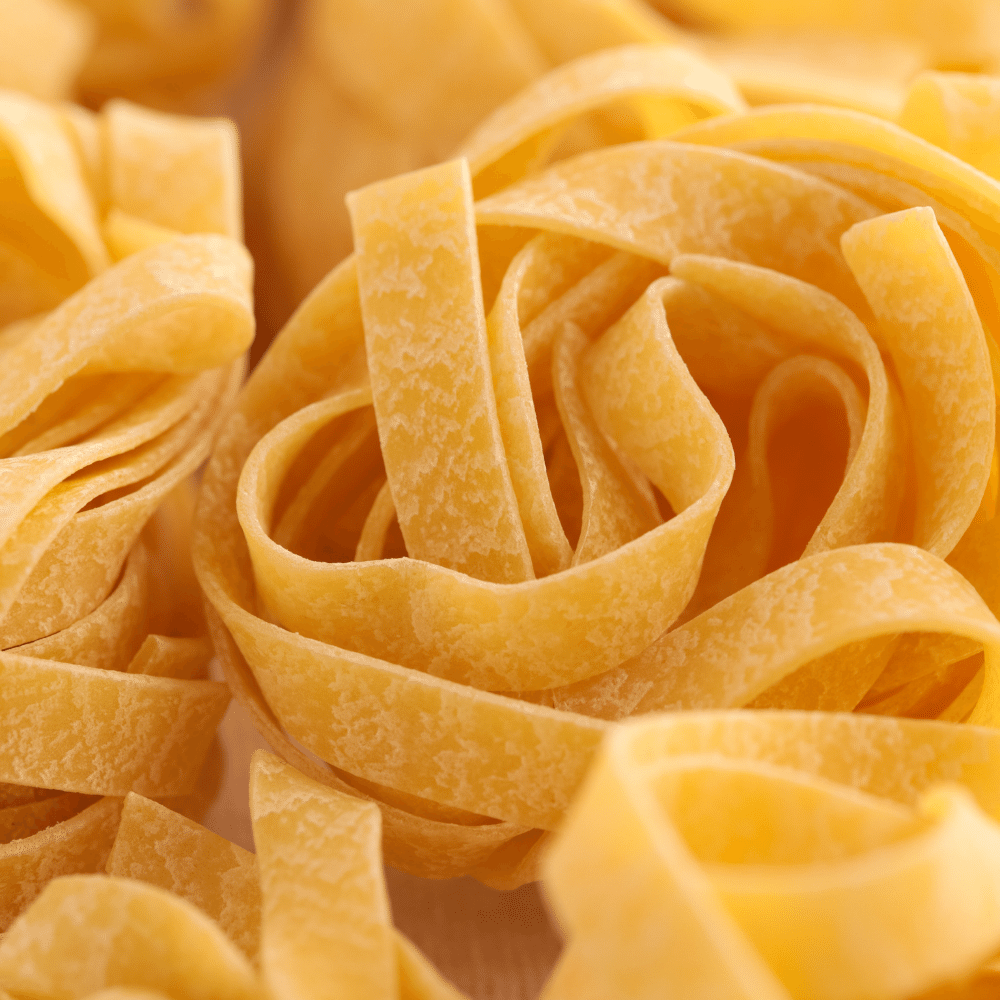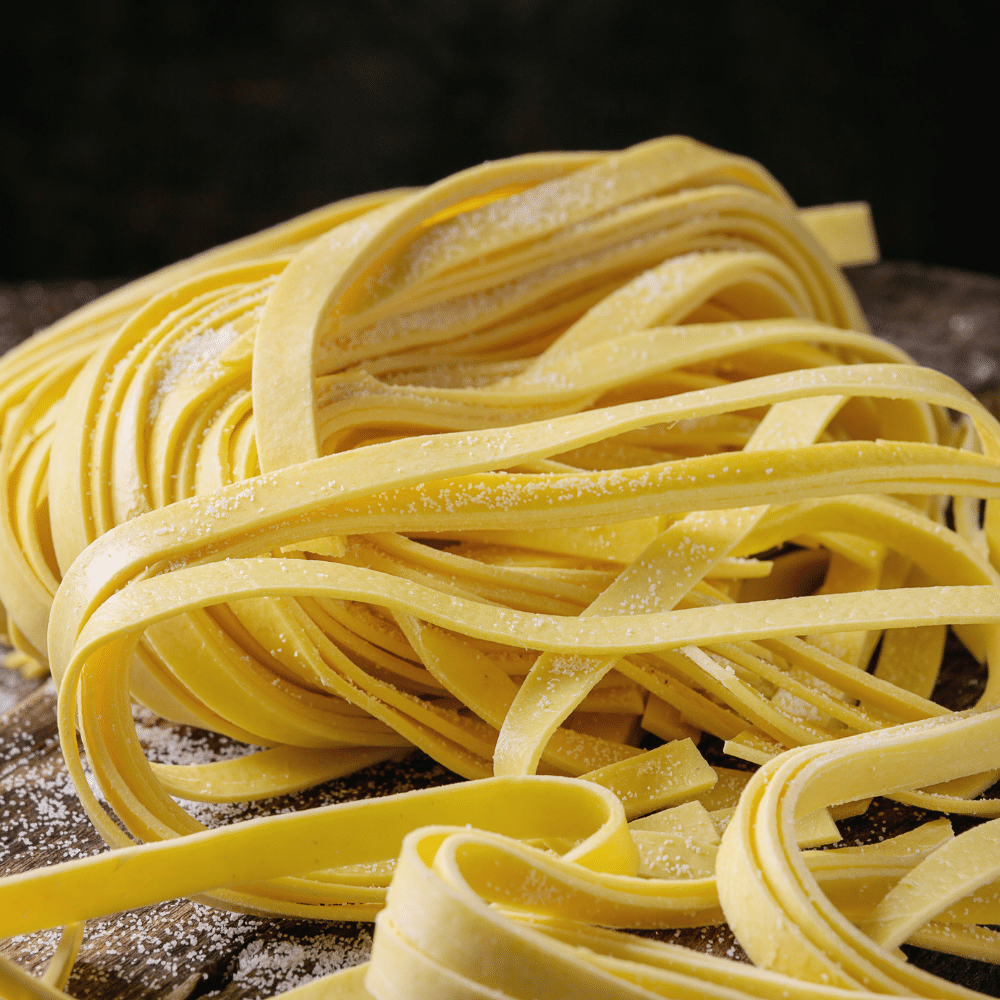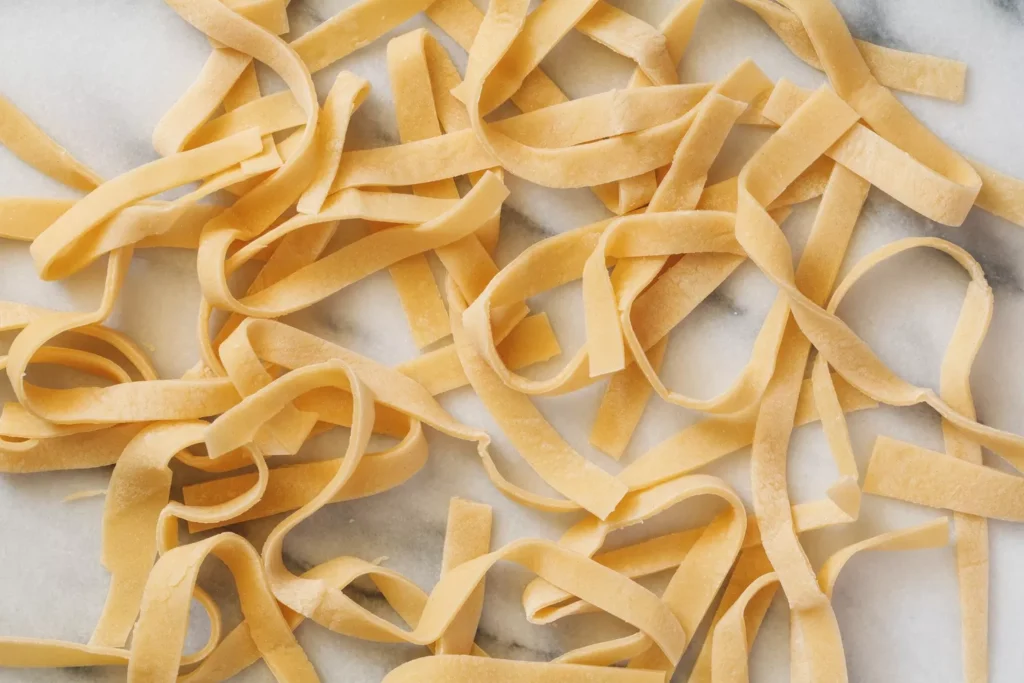If you’re looking for a quick and easy dinner, buttered noodles are always a great option.
Pasta is the base of this delicious dish, so it’s important to choose the right type.
Not all pastas are created equal when it comes to making buttered noodles.
The best pasta for buttered noodles is a long, thin noodle like spaghetti or fettuccine. These types of noodles help to evenly distribute the butter and other seasonings throughout the dish. Additionally, they are better able to absorb flavor than short and thick varieties such as penne or rigatoni.
In this article, I’m going to share with you my six favorite types of pasta for making buttered noodles.
I’ll also explain why these pastas work best and provide some tips on how to make perfect buttered noodles every time.
Read Also: What To Serve With Buttered Noodles? 15 Best Side Dishes
What Are Buttered Noodles?

Buttered noodles is a classic comfort food dish that consists of cooked egg noodles tossed in butter and often topped with grated cheese.
It can be served as a side dish or main course, depending on the ingredients added to it.
The most basic version of buttered noodles is simply cooked egg noodles mixed with melted butter, salt, and pepper.
However, many variations exist that include additional ingredients such as garlic, herbs, spices, vegetables (such as mushrooms or peas), meats (such as bacon or sausage), and cheeses (such as Parmesan).
Buttered noodles are usually served hot but can also be enjoyed cold in salads or sandwiches.
Buttered noodles are an easy-to-make dish that requires minimal effort yet yields delicious results.
The combination of creamy butter and tender egg noodles creates a comforting flavor profile that appeals to all ages.
This simple yet satisfying meal is sure to become a family favorite!
The 6 Best Types of Pasta for Buttered Noodles
Buttered noodles are a classic dish, but sometimes it can be difficult to find the right type of pasta for the job.
Fortunately, there are several types of pasta that will work perfectly with buttery sauces.
Here we look at six of the best options:
1. Spaghetti

Spaghetti is a type of pasta made from durum wheat and water.
It is long, thin, cylindrical strands that are usually boiled and served with sauce.
The word spaghetti comes from the Italian word spaghetto, which means “little strings”.
- Taste: Spaghetti has a mild flavor that pairs well with many sauces and seasonings. It also absorbs flavors easily so it can be used in a variety of dishes. When cooked properly, spaghetti should have a slightly chewy texture but still remain al dente (firm to the bite).
- Uses: Spaghetti is one of the most popular types of pasta for making classic Italian dishes like spaghetti Bolognese or carbonara. But it can also be used in other recipes such as baked casseroles, soups, salads, stir-fries, and even desserts! For an easy weeknight dinner idea try adding some butter to cooked spaghetti noodles for a simple yet delicious dish.
2. Fettuccine

Fettuccine is a type of pasta that is made from flat, thick strands of egg-based dough.
It is similar to spaghetti but wider and flatter in shape.
The name comes from the Italian word for “little ribbons,” which describes its appearance perfectly.
- Taste: Fettuccine has a mild flavor that pairs well with many sauces and ingredients. It absorbs flavors easily, making it an ideal choice for creamy dishes like Alfredo or carbonara sauce. Its texture also makes it great for dishes with vegetables or proteins, as it can hold up to heavier ingredients without becoming too soggy.
- Uses: Fettuccine is one of the most versatile pastas out there and can be used in a variety of dishes. It’s perfect for classic Italian recipes like fettuccine alfredo or carbonara, but it can also be used in soups, salads, stir-fries, casseroles, and more! You can even use fettuccine to make noodle kugel—a traditional Jewish dish—or macaroni and cheese if you’re feeling adventurous!
3. Tagliatelle

Tagliatelle is a type of pasta that originated in the Emilia-Romagna region of Italy.
It is long, flat ribbons of pasta that are usually about 0.25 inches wide and can be made from either durum wheat or egg.
The name comes from the Italian word “tagliare” which means “to cut” because it is traditionally cut into strips by hand.
- Taste: Tagliatelle has a slightly chewy texture and a mild flavor that pairs well with creamy sauces like Alfredo sauce or buttery sauces like carbonara. It also works well with tomato-based sauces, pesto, and other vegetable dishes.
- Uses: Tagliatelle can be used in many different types of dishes including soups, salads, casseroles, lasagnas, and more. It’s especially popular for making buttered noodles as it absorbs the butter nicely while still maintaining its shape and texture when cooked properly.
4. Pappardelle

Pappardelle is a type of pasta that originated in Tuscany, Italy.
It is a wide, flat noodle with ruffled edges and can be made from either egg or semolina flour.
The name comes from the Italian verb “pappare” which means to gobble up.
- Taste: Pappardelle has a slightly chewy texture and absorbs sauces well. It pairs particularly well with rich, creamy sauces such as Alfredo sauce or butter-based sauces like carbonara.
- Uses: Pappardelle is great for dishes that require long cooking times because it holds its shape better than other types of pasta. It also works well in soups and casseroles, as well as cold salads when served chilled after being cooked al dente.
5. Linguine

Linguine is a type of pasta that is similar to spaghetti but slightly wider and flatter.
It has a long, thin shape and the edges are usually slightly curved.
The name linguine comes from the Italian word for “little tongues,” which describes its shape perfectly.
- Taste: Linguine has a mild flavor that pairs well with many different sauces and ingredients. It’s also great for absorbing flavors, so it can be used in dishes with bolder flavors like garlic or pesto without overpowering them.
- Uses: Linguine is versatile enough to be used in both light and hearty dishes alike. It’s perfect for making creamy sauces like Alfredo or carbonara, as well as lighter tomato-based sauces or pestos. You can also use it in salads, soups, stir-fries, casseroles, and more!
6. Egg Noodles

Egg noodles are a type of pasta made with flour, eggs, and salt.
They are usually yellow in color due to the egg yolks used in their production.
Egg noodles have a slightly chewy texture and can be found in various shapes such as thin spaghetti-like strands or wider ribbons.
- Taste: Egg noodles have a mild flavor that is slightly sweet due to the egg yolks used in their production. They also have a slight nutty flavor from the wheat flour used to make them. The texture of egg noodles is slightly chewy but still tender when cooked properly.
- Uses: Egg noodles are very versatile and can be used in many different dishes such as soups, casseroles, stir-fries, salads, and more! They pair well with creamy sauces like Alfredo sauce or buttery sauces like garlic butter sauce for an indulgent meal. You can also use them as a base for noodle bowls topped with vegetables and proteins of your choice for an easy weeknight dinner.
Conclusion
In conclusion, buttered noodles are a classic comfort food that are easy to make and can be enjoyed by all.
The best types of pasta to use for buttered noodles are spaghetti, fettuccine, tagliatelle, pappardelle, linguine, and egg noodles. Each of these pastas will hold up to the butter and create a delicious, flavorful dish.
No matter which type of pasta you choose, buttered noodles are sure to be a hit with family and friends.
With the right ingredients and a little bit of time, you can create an unforgettable dish that will be enjoyed for years to come.

6 Best Pasta for Buttered Noodles
Ingredients
- Spaghetti
- Fettuccine
- Tagliatelle
- Pappardelle
- Linguine
- Egg Noodles
Instructions
- Pick your favorite kind of pasta from this list to use for your buttered noodles recipe.
- Prepare the rest of your meal, and enjoy!
Jenny has always been passionate about cooking, and she uses her platform to share her joy of food with others. Her recipes are easy to follow, and she loves giving tips and tricks to help others create their own unique culinary creations.

